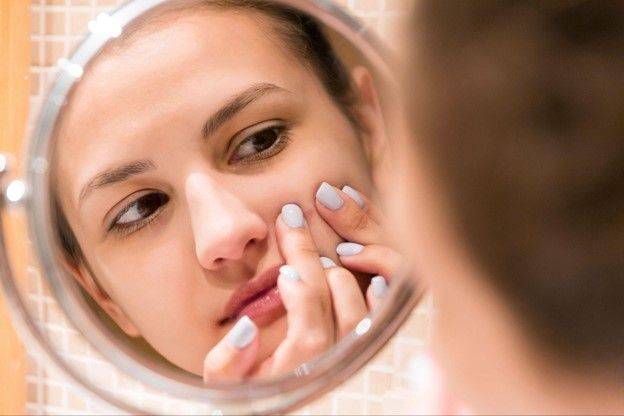
3 Main Causes of Teen Acne every Parent Needs to Know (and How to Manage it)
Wondering why your teen’s getting acne and how you can help them treat it? Here’s everything you need to know
Most of us will get spots at some point, but teenagers are particularly prone to breakouts. According to the NHS (1), around 95% of people aged 11 to 30 are affected by acne or spots to some extent. But knowing they’re not the only one, doesn’t make it any easier for teens.
So what actually causes acne and, more importantly, how can you help your child achieve clearer skin?
Here’s what you need to know.
What causes acne in teenagers?
According to Acnecide, experts in clearer skin and the UK’s number one selling acne treatment brand (2), there are three main causes of spots and blemishes.
- Excess oil
During adolescence, changes and spikes in hormones can cause the oil glands to produce excess oil. Also known as sebum.
The main culprits are hormones like androgens, testosterone and dihydrotestosterone – which both boys and girls have. When these hormones spike, the sebaceous glands, which are found in the hair follicles, get bigger and produce more oil.
2. Clogged pores
Oil on the skin then mixes with dead skin cells around the hair follicles, leading to clogged pores. Clogged pores cause blackheads and whiteheads.
3. Bacteria
Add bacteria to the mix and that’s when angry spots occur.
Bacteria that live naturally on the skin can infect blocked pores causing papules, pustules, nodules or cysts – or, in other words, acne.
How can I help my teen treat their acne?
One of the best ways to help your teen’s acne is by using products designed to tackle the root causes of spots – bacteria, excess oil and clogged pores.
Is there a brand I should look for?
Acnecide products are the number one selling treatments for acne in the UK and are designed specifically for spot-prone skin. Available without a prescription, they contain 5% Benzoyl Peroxide to treat mild acne.
Benzoyl Peroxide is an active medicinal ingredient that kills up to 95% of spot-causing bacteria in one week. It has exfoliant properties, helping to reduce blocked pores, meaning it tackles blackheads and whiteheads, too.
The products also contain 'AC microsphere technology’, which absorbs excess oil while releasing glycerine to hydrate the skin.
A triple threat, then.
Which Acnecide product should my teenager choose?
The best Acnecide product for your teen depends on whether they’d prefer a gel or a face wash. Both are equally as effective.
Acnecide Face Gel is a leave-on treatment that’s applied directly to the affected areas.
Acnecide Face Wash Gel is applied to wet, cleansed skin. The gel is applied over the problem areas and left for one to two minutes before washing off.
What about the rest of their skincare?
Alongside Acnecide’s acne treatments, your teen should ideally follow a gentle skincare routine for clearer skin. This should include a cleanser and moisturiser suitable for spot-prone skin.
Check out our guide to the best daily skincare routine for teens here
Cleansing
When your teen is using acne treatments, their skin can become sensitive. Purifide Daily Cleanser is designed for sensitive, blemish-prone skin and is ideal for use alongside Acnecide spot treatments. Purifide is the range of clear skin daily skincare from the makers of Acnecide, after all.
Used morning and evening, the gentle cleanser helps remove the build up of oil and dead skin cells that can cause blocked pores. It also contains glycerin to help hydrate your teen’s skin and liquorice root extract and zinc to soothe.
Moisturising
Excess oil is one of the key causes of acne, so it might seem counterintuitive to use a moisturiser on spot-prone skin. But acne treatments can cause some irritation or dryness while your teenager’s skin is getting used to them.
A non-comedogenic moisturiser (that’s one that doesn’t block pores) will help maintain and protect your teenager’s skin barrier as well as soothing sensitive skin. Purifide has a great option.
Purifide’s Daily Moisturiser SPF 30 contains sun protection with a barely-visible UVA/B sunscreen. Before your teenager asks, yes, it can be worn under makeup.
Designed to be used in the morning, it also contains skin barrier nourishing and hydrating ingredients, including Ceramides, Glycerin, Panthenol (Vitamin B5) and Vitamin E, for soft, smooth skin.
Is there a quick fix to clear up spots?
Consistency is key with acne treatments. It can take a few weeks to start seeing results. But in the case of a blemish emergency, keep some Purifide 3 in 1 Power Patches to hand.
These invisible, ultra-thin spot patches can be applied to early-stage blemishes to shrink and soothe any emerging spots and help prevent blemish marks.
What if my teen’s acne is severe or doesn’t respond to treatment?
If your child’s acne is severe, or they’re getting scarring from their spots, speak to your GP, a pharmacist or dermatologist for advice about managing acne.
Acnecide Face Gel and Acnecide Face Wash Gel are indicated for the treatment of mild acne. Contains 5% benzoyl peroxide. Always read the label. GB-ACC-2400053 August 2024.
(1) NHS Website (Who’s affected?) – https://www.nhs.uk/conditions/acne/
(2) For verification, email acnecide.uk@galderma.com

